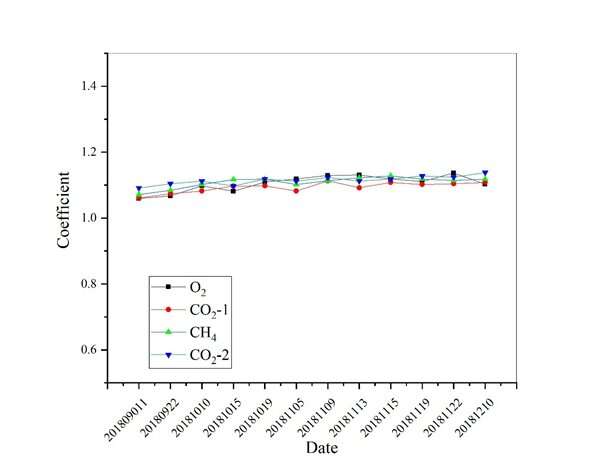This article has been reviewed according to Science X's editorial process and policies. Editors have highlighted the following attributes while ensuring the content's credibility:
fact-checked
trusted source
proofread
Scientists improve calibration and verification of greenhouse gas satellite payload for accurate carbon monitoring

According to a study recently published in Remote Sensing, researchers led by Prof. Xiong Wei from the Hefei Institutes of Physical Science of the Chinese Academy of Sciences conducted a study to verify and calibrate the Greenhouse Gases Monitoring Instrument (GMI), a satellite payload that provides data on greenhouse gases.
China's carbon neutrality goals require accurate monitoring and assessment of carbon emissions.
In this study, a mobile satellite-to-ground verification system was developed to address the problems of low verification frequency and large space-time differences, with authenticity verification using the Global Carbon Column Observation Network.
The system, called the high-resolution Fourier transform spectrometer (HRFTS), improved the accuracy of satellite remote sensing of greenhouse gases (GHG). To achieve a spectral resolution of 0.26 cm-1 compatible with on-orbit GHG satellite loading, the HRFTS employed dynamic collimation technology, gas absorption, and band scanning methods to evaluate the absorption spectrum and instrument line shape.
Cross-comparison studies were performed using the portable verification equipment EM27/SUN, and the instrument data were processed for baseline correction, spectral fine registration, and environmental parameter profile reconstruction. The GMI sensor on the GF5-02 satellite was recently tested using the HRFTS, and the results showed that the CO2 column concentration retrieval error was about 1.5 ppm and the CH4 column concentration retrieval error was about 11.3 ppb.
Previously, the researchers also designed an 11-field global digital calibration field network to meet the high-frequency and wide dynamic range calibration requirements for the characteristics of the GMI such as large field of view, non-imaging, and hyperspectral, and the calibration experiments were conducted with it, and the results showed that the performance of the GMI is stable in orbit with the standard deviation of variation not exceeding 3%.
This innovation in the verification of satellite ground synchronization enables the optimization of satellite inversion algorithm and systematic error correction, thereby improving the monitoring of global carbon sources and sinks.
More information: Hailiang Shi et al, High Resolution Fourier Transform Spectrometer for Ground-Based Verification of Greenhouse Gases Satellites, Remote Sensing (2023). DOI: 10.3390/rs15061671




















